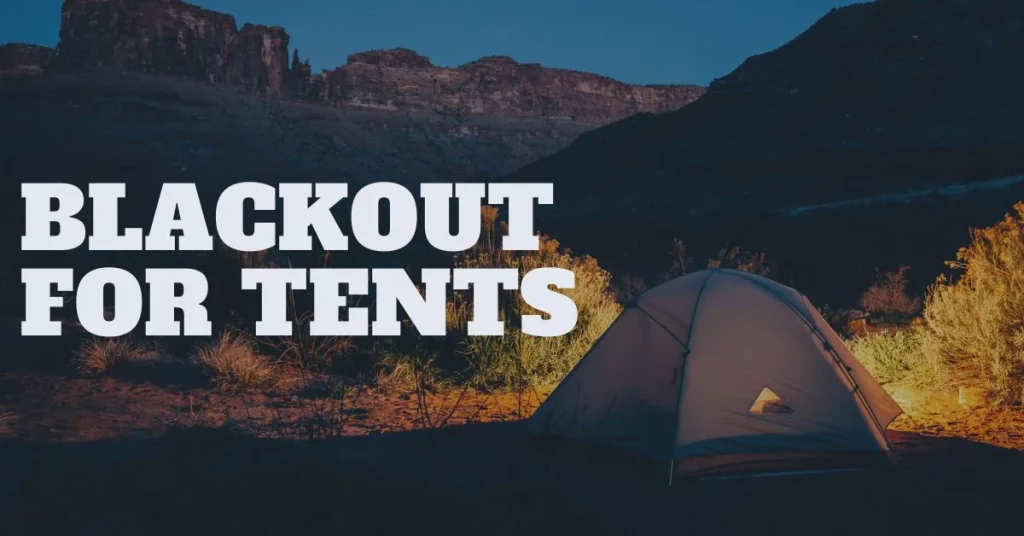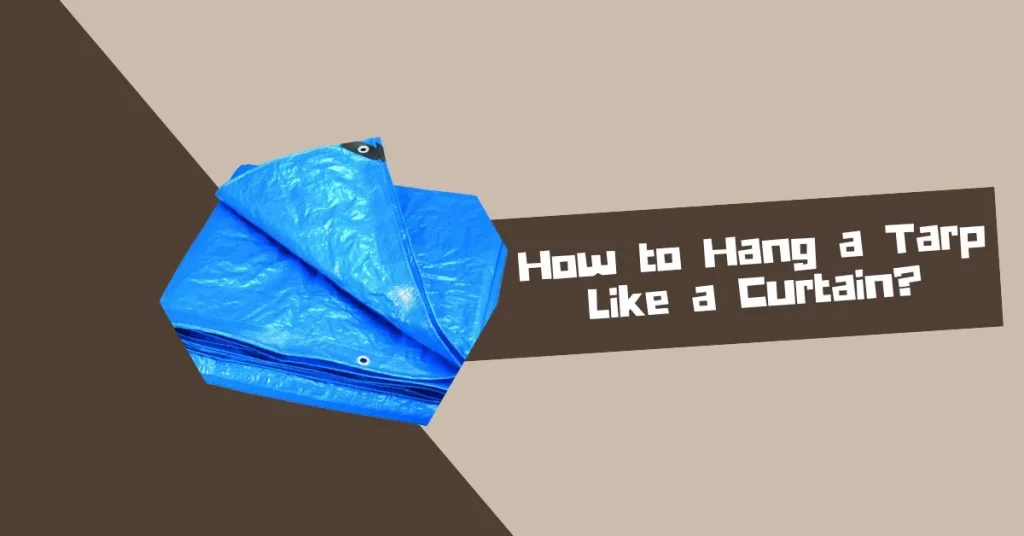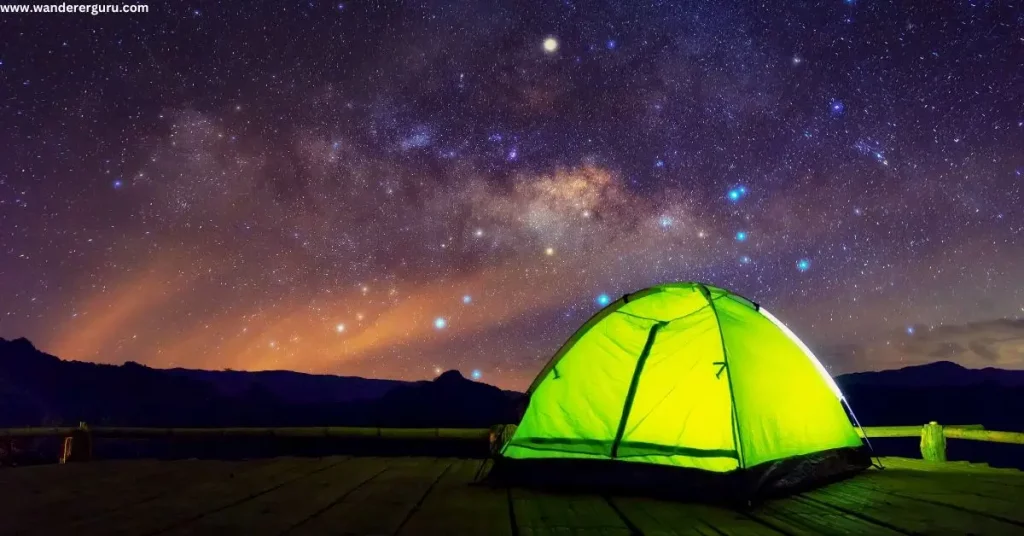Camping is a great way to reconnect with nature and escape the hustle and bustle of everyday life. However, sleeping in a tent at night can sometimes be challenging, especially when the sun rises early and fills your tent with light. For many people, sleeping in a dark room is essential for a good night’s sleep, and this is where tent blackout liners and DIY tent insulation come into play. In this guide, we will cover how to blackout a tent, DIY tent camping tips, and answer common questions like, “Does tent color matter?” and “What is the best color tarp to reflect heat?”
How to Blackout a tent?
Blacking out a tent can be good way to sleep peacefully. You will not feel a lot of brightness and light will not going to pass through from balck surface easily. If you’re a dark lover and wants to sleep peacefully blackingout a tent can be great way. You can follow the following tips in order to blackout a tent with ease:
Blackout for Tents

To achieve a complete blackout sleep tent, start by selecting a dark-colored tent or a tent with bedroom compartments that have dark or blackout material. Black tent camping is popular among campers who prioritize sleep quality. If you already have a tent, you can make it darker by using a tent blackout liner. This liner can be attached to the inside of your tent to block out light and also provides additional DIY tent insulation.
DIY Tent Insulation Liner
A DIY tent insulation liner can be made from reflective materials like Mylar or a space blanket. This material will not only blackout your tent but also reflect heat, keeping your tent at a comfortable temperature. To make your own DIY tent insulation liner, measure the inside of your tent and cut the material to size. Attach the material to the inside of your tent using adhesive Velcro strips or double-sided tape. For more ideas visit my Pinterest.
Bonus:
HOW TO INSULATE A TENT FOR WINTER CAMPING?
Darken Windows for Sleeping
If your tent has windows, you will need to cover them as well. Use a dark tarp or material to cover the windows from the inside. A common question is, “Do blue tarps block heat?” While blue tarps can block light, they are not the best at blocking heat. A darker or reflective tarp would be more effective. So, what color tent is best? When it comes to heat reflection, a silver or reflective tent is the best option.
How to Hang a Tarp Like a Curtain?

Hanging a tarp like a curtain can be an effective way to darken the inside of a tent and add an extra layer of insulation. To hang a tarp like a curtain, you will need some rope or paracord and a few clips or carabiners. Thread the rope through the eyelets of the tarp and then hang the rope from the top of your tent or surrounding trees. Use the clips or carabiners to attach the tarp to the rope.
Conclusion
Sleeping in a tent at night can be a restful experience if you take the time to create a dark and comfortable sleeping environment. With a few simple steps and some DIY camping tent hacks, you can blackout your tent and enjoy a restful night’s sleep under the stars. Remember to choose the right tent color, use a tent blackout liner or DIY tent insulation, cover your windows, and hang a tarp like a curtain to block out light and heat. Happy camping!
FAQs
Q1: Does tent color matter?
Ans: Yes, tent color does matter. Darker tents or tents with reflective material will block out light and heat more effectively than lighter colored tents.
Q2: What is the best color tarp to reflect heat?
Ans: The best color tarp to reflect heat is silver or reflective. Dark tarps can also be effective at blocking heat but may also absorb heat, making your tent warmer.
Q3: Do blue tarps block heat?
Ans: Blue tarps can block light but are not the best at blocking heat. A darker or reflective tarp would be more effective at blocking heat.
Q4: What is the best way to sleep in a tent?
Ans: The best way to sleep in a tent is to create a comfortable and dark sleeping environment. Use a sleeping pad or air mattress, a comfortable sleeping bag, and blackout your tent using the tips mentioned above.
Bonus:

